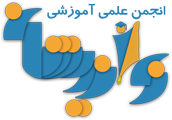جستجو در تالارهای گفتگو
در حال نمایش نتایج برای برچسب های 'atmega'.
5 نتیجه پیدا شد
-
timer digital To create a realtime timer, realtime microcontroller is not required (RTC). You only need a crystal and a timer prescale settings. for example, if used for 8MHz crystal, then choose the timer prescale of 8. Prescale is a divisor which will be conditional on crystal beats as needed. timer frequency = frequency of crystal / prescale so, timer frequency = 1MHz since T = 1 / F, then T = 1US This means that every single wave oscillation takes 1US. To simplify the calculation, the timer0 registers (TCNT0) shall be 155. TCNT0 then oscillates between 155 to 255. so that any overflow occurs, the timer has counted 100us. when made variable “x” to be in increments of each of the Overflow occurs when x = 10, the timer value is 1ms. and if each x = 10 will raise the value of variable “y”, then “y” is the timer value in ms. (In experiments conducted used ATMega8535 with 8MHz crystal).
-
- application note
- atmega
-
(و 23 مورد دیگر)
برچسب زده شده با :
-

Analog to Digital Converter (ADC) on ATMega8535
am in پاسخی ارسال کرد برای یک موضوع در زبان تخصصی برق
ATmega8535 provides the ADC with a resolution of 10 bits. ADC is connected to 8 channel Analog Multiplexer which allows formed eight single-ended input voltage is ADC0 to ADC7. Can also be configured into seven differential input channels with ADC1 as the common terminal and the other negative as a positive voltage input. Or a second differential input channels with a choice reinforcement (gain) 10x or 200x, ie ADC1, ADC0 and ADC3, ADC2. the use of ADC atmega8535 ADC has an analog supply voltage pin separate AVCC. AVCC voltage is ± 0.3V of VCC.-
- 1
-

-
- analog to digital converter
- atmega
- (و 23 مورد دیگر)
-
atmega128 ATMEGA 128 (AVR) is a microcontroller that has been equipped for 4Kbyte in its chip EEPROM. EEPROM is separate from the AVR flash memory, and can be written, read per byte. To be able to access the EEPROM it needs to manage registers and fuse bit. To prevent errors in the writing and reading of EEPROM cultivated power supply that is used quite stable. When reading the EEPROM microcontroller stops during the four clock cycles before doing the next command, and to write EEPROM microcontroller’s clock stopped during the second cycle before doing the next command.
-
- 1
-

-
- arduino
- atmega
-
(و 23 مورد دیگر)
برچسب زده شده با :
- arduino
- atmega
- atmega programmer
- atmel avr
- avr atmega
- avr isp
- avr microcontroller
- avr microcontrollers
- avr studio
- board kit
- buy it now
- development board
- download
- eeprom
- how to
- isp program
- isp programmer
- jtag connector
- microcontroller
- microcontrollers
- product
- program memory
- programmer
- project
- shipping
-
In this article will discuss the use of DST-128 AVR Stamp. further discussion we need to know the specifications of the DST-128 AVR Stamp. dst avr stamp • 128 Kb Flash PEROM • 4Kb EEPROM • 4Kb SRAM • On Chip Analog Comparator • 8 Channel 10 bit ADC • 2 8 bit PWM • 6 PWM dengan resolusi programmable (2-16 bit) • Dual Programmable UART • SPI Interface • Programmable Watchdog dengan On Chip Oscillator • Adjustable VREF ADC • 53 bit I/O • Power On Reset dan Programmable Brown out detection • Internal Calibrated RC Oscillator After knowing the specifications of the DST-AVR Stamp, we will discuss The first application discussed is the use of timers. in each application, such as the indicator to indicate the program is running, as well as reference time for the application. And the most simple application is a digital clock. This application will make PORTC bit AVR ranging from 0 to bits 7 blinks every 2 ^n bit number, which blink on bit 0 is 0.5 ms. So if the second bit will be blinks every 2 ^ 2 or 4 * 0.5 mS then at the bit to two flashes every 2ms. timing can run correctly then the timer interrupt will be generated every Timer used for this application is the timer "1". • Normal Mode • Compare Mode • Fast PWM Mode • Phase Correct PWM Mode • Phase and frequency correct PWM Mode For this application the timer operates in normal mode where the timer will count ranging from 0-65535. Timer 1 prescaler which has several functions to dividing the crystal frequency where the frequency of this crystal will be used as a source of countdown timer. Piece of program to set the timer registers as follows: TCCR1A=0x00; TCCR1B=0x04; // Timer/Counter 1 initialization // Clock source: System Clock // Clock value: 46,875 kHz // Mode: Normal top=FFFFh // OC1A output: Discon. // OC1B output: Discon. // OC1C output: Discon. // Noise Canceler: Off // Input Capture on Falling Edge // Timer 1 Overflow Interrupt: On TCNT1H=0xB7; TCNT1L=0x1B; // Timer/Counter 1 initialization value ICR1H=0x00; ICR1L=0x00; OCR1AH=0x00; OCR1AL=0x00; OCR1BH=0x00; OCR1BL=0x00; OCR1CH=0x00; OCR1CL=0x00; // Input Capture Interrupt: Off // Compare A Match Interrupt: Off // Compare B Match Interrupt: Off // Compare C Match Interrupt: Off For more details, see the datasheet. The timer will tick every 0.5ms once and will interrupt the program (temporarily stop) and run commands contained in the interrupt service routine.Piece of program below are the commands that are carried out during the timer interrupt. ISR(TIMER1_OVF_vect) { static unsigned char i; TCNT1H=0xB7; TCNT1L=0x1B; i++; PORTC=i; if(i>255) { i=0; } } For these applications led connected to PORTC. So that every time the timer interrupt not counting from 0, the initial value of necessary charging timer. Its value is obtained from 46 875 to be converted to hexadecimal numbers B71B. Previously DDR PORTC made in order to switch the output mode display. moving led
-
- application
- atmega
- (و 12 مورد دیگر)
-

دانلود دانلود پروژه کامل چراغ راهنمایی (trafic _ light) تحت کدویژن
am in پاسخی ارسال کرد برای یک موضوع در میکروکنترلرها
خوب دوستان پستی که امروز گذاشتم یک پروژه چراغ راهنمایی برای سر چهار راه ها می باشد که فکر می کنم براتون جالب باشه اگه دوست دارید بدونید که چراغ های راهنمایی سر یک چهار راه چطور کنترل و مدریت میشوند حتما این پروژه را دانلود کنید . در ضمن این پروژه به زبان codevision است . و فایلی که برای دانلود اماده شده شامل : سورس برنامه به زبان Codevision + شماتیک + فایل پروتئوس حجم: 50 کیلوبایت لینک دانلود منبع: برق 20 دات کام پسورد فایل: www.bargh20.com
